
E-mail: font@focusonnature.com
Phone: Toll-free in USA 1-888-721-3555
or 302/529-1876
 |
PO Box 9021,
Wilmington, DE 19809, USA E-mail: font@focusonnature.com Phone: Toll-free in USA 1-888-721-3555 or 302/529-1876 |
A
List
with
some Photos
of
South America
Butterflies
and Moths
Including those during
Focus On Nature Tours
in Argentina,
Brazil,
Chile,
Ecuador,
Venezuela
with tours in the months of: March, July, August, September, October,
November
A 6-part List of South American Butterflies
and a List of South American Moths,
all with some Photos,
compiled by Armas Hill
Links:
Part #1 - Swallowtails (Papilionidae) Part #2 - Whites, Yellows, Sulphurs, Marbles (Pieridae)
Part #3 - Hairstreaks, Blues (Lycaenidae) & Metalmarks (Riodinidae)
Part #4 - Brushfoots (Nymphalidae) Part #5 - Clearwings, most Satyrs (Nymphalidae)
Part #6 - Skippers (Hesperlidae) Part #7 - Moths
Additional Links:
Upcoming FONT
Birding & Nature Tours in South America in:
Brazil
Ecuador Uruguay Venezuela
Argentina
Chile
Lists & Photo Galleries of BIRDS including those during FONT Tours in South America
Lists & Photo Galleries of MAMMALS relating to FONT Tours in South America
Lists of Photo Galleries of AMPHIBIANS & REPTILES including those during FONT Tours in South America
Alphabetical Directory of Butterflies by Genus of those with Photos in the FONT Website
Directory of Photos in this Website
![]()
Throughout the world, there are over 180,000 described species of butterflies
and moths (in the order Lepidoptera).
In this 6-part list of South American butterflies with an accompanying list of
moths, about 4,800 species (with
subspecies) are included.
During upcoming months, more data will continue to be put into these lists,
particularly regarding range and habitat, so as to make them rather
informative. Photographs will also continue be added. There are now about 600
species of butterflies and moths with photos.
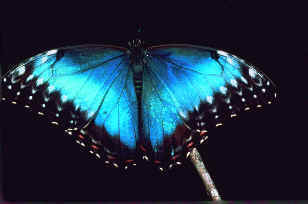
SOME COMMENTARY REGARDING BUTTERFLIES IN AMAZONIAN SOUTH AMERICA
written by Henry Walter Bates in 1863 in "The Naturalist on the River
Amazons":
"The neighborhood of Para
(in Brazil) is rich in butterflies. It will convey some idea of the diversity when
I mention that about 700 species of that tribe can be found within an hour's
walk of the town
(note: maybe an exaggeration.),
whilst the total number found in the
British Isles does not exceed 66, and the whole of Europe supports only 321.
Some of the most showy species, such as the swallow-tailed kinds, Papilio,
Polycaon, Thoas, Torquatus, and others, are seen flying about the streets and
gardens; sometimes they come through the open windows, attracted by flowers in
the apartments.
Those species of Papilio which are most characteristic of the country, so
conspicuous in their velvety-black, green, and rose-coloured hues, which
Linnaeus, in pursuance of his elegant system of nomenclature - naming the
different kinds after heroes of Greek mythology - called Trojans, never leave
the shades of the forest.
The splendid blue Morphos, some of which measure seven inches in expanse, are
generally confined to the shady alleys of the forest. They sometimes come forth
into the broad sunlight. When we first went to look at our new residence
in Nazareth, a Morpho menelaus, one of the most beautiful kinds, was seen
flapping its huge wings like a bird on the verandah.
That species, however, although much admired, looks dull in colour by the side
of its congener, the Morpho rhetenor, whose wings on the upper face, are of
quite a dazzling lustre.
Rhetenor usually prefers the broad sunny roads in the
forest, and is an almost unattainable prize, on account of its lofty flight; for
it very rarely descends nearer the ground than about 20 feet. When it comes
sailing along, it occasionally flaps its wings, and then the blue surface
flashes in the sunlight, so that it is visible a quarter of a mile off.
There is another species of this genus, of a satiny-white hue, the Morpho
uraneis; this is equally difficult to obtain; the male only has the satiny
lustre, the female being of a pale-lavender colour.
It is in the height of the dry season that the greatest number and variety of
butterflies are found in the woods; especially when a shower falls at intervals
of a few days. An infinite number of curious and rare species may then be taken,
most diversified in habits, mode of flight, colours, and markings: some yellow,
others bright red, green, purple, and blue, and many bordered or spangled with
metallic lines and spots of a silvery or golden lustre.
Some have wings as transparent as glass; one of these clear-wings is especially
beautiful, namely, the Hetaera esmeralda; it has one spot only of opaque
coloring on its wings, which is of a violet and rose hue; this is the only part
visible when the insect is flying low over dead leaves, in the gloomy shades
where alone it is found, and it then looks like a wandering petal of a
flower."
HERE, A LINK TO A
PHOTO GALLERY OF MOTHS AND BUTTERFLIES
DURING SOME FONT TOURS IN SOUTH AMERICA:
A Photo Gallery of Moths & Butterflies
during FONT Tours in Ecuador
in July 2013 & April-May 2014
A
SHORT, VERY SHORT
Photo Gallery
of Some
Neotropical Butterflies
Photo #1
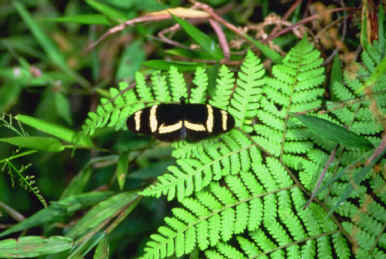
Photo #2
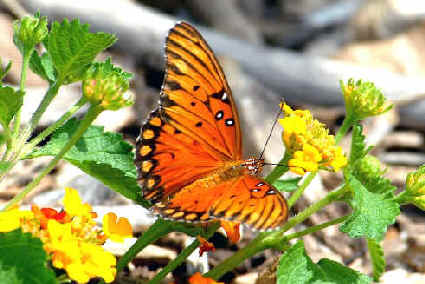
Photo #3
Photograph by Howard Eskin.
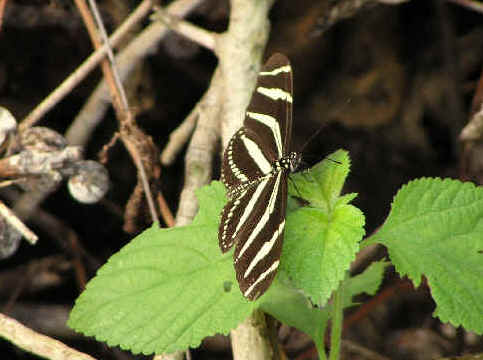
Photo #4
This & the following photograph by Doug Johnson.
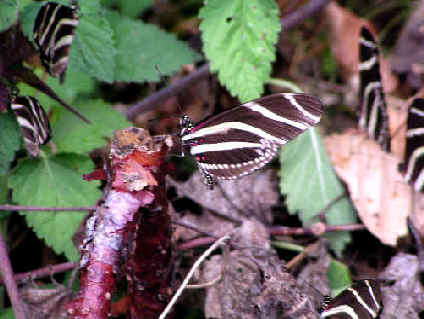
Photo #5
There are many species of butterflies with
photos, nearly 200,
reached through the links near the top of this page.
And many of those butterflies occur in South
America,
having been seen during FONT tours at places such as
Iguazu Falls in Argentina and Brazil,
and in the highlands and lowlands of Ecuador.
Butterflies at Iguazu Falls
![]()